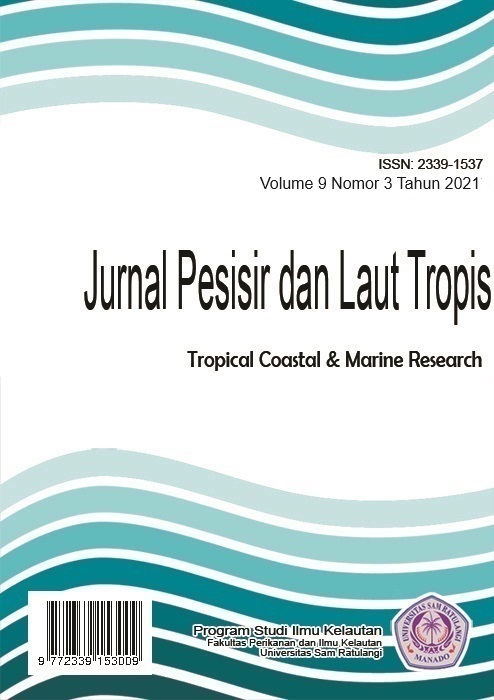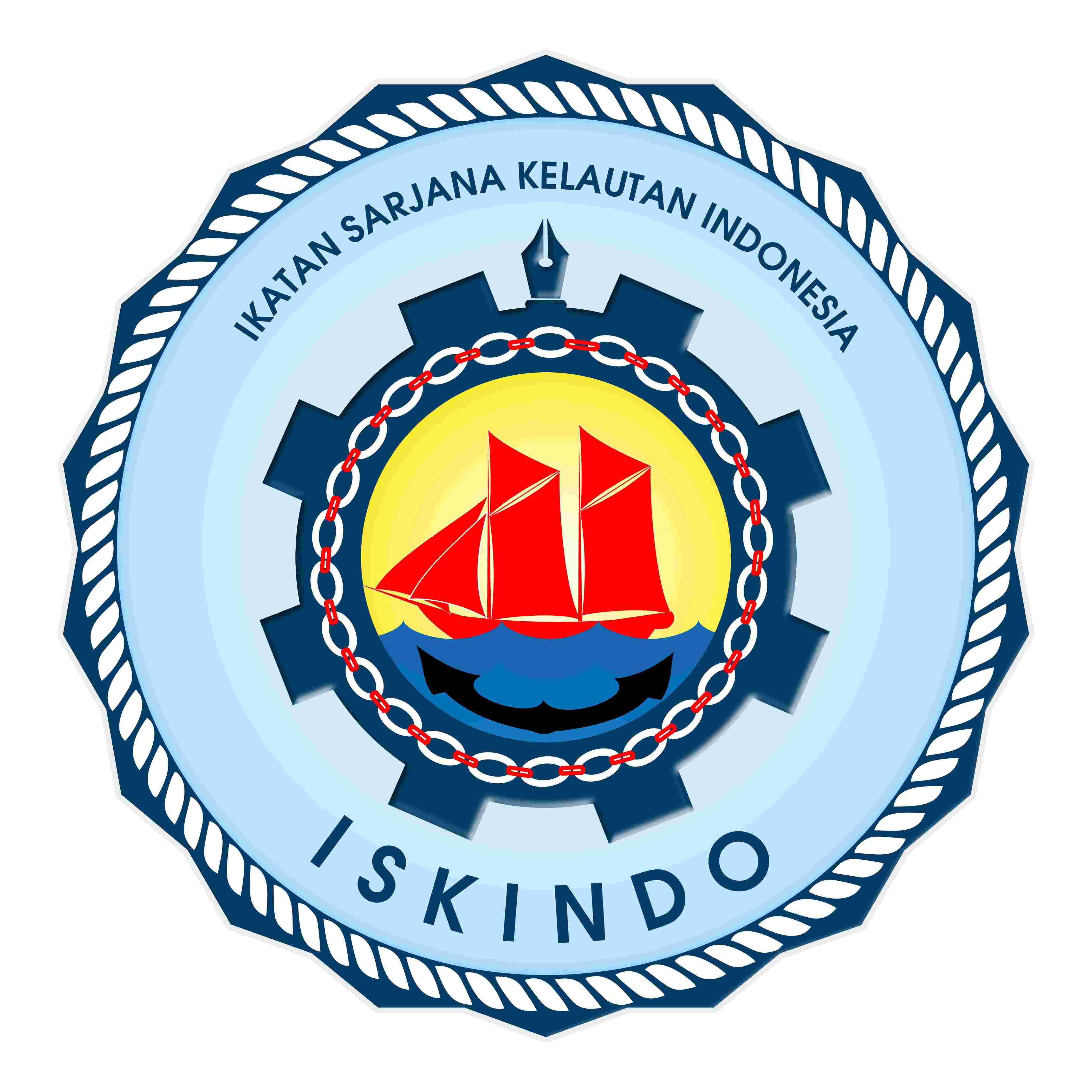Keanekaragaman Makrobentos yang Menempati Agregasi Kerang, Septifer bilocullaris di Tiwoho, Kabupaten Minahasa Utara, Sulawesi Utara
DOI:
https://doi.org/10.35800/jplt.9.3.2021.38043Abstract
The purpose of this study was to determine the type and diversity of macrobenthos that inhabit the aggregation of Septifer bilocularis shellfish in the coastal waters of Tiwoho, North Minahasa Regency, North Sulawesi. Sampling of macrobenthos was carried out using core (PVC), both at the position of small aggregation (AK), middle large aggregation (ABT), and large edge aggregation (ABP). Sampling was carried out 4 times on different aggregations of shellfish. The data has been analyzed using the Diversity Index (H), the dominance index (D), and the Uniformity Index (E). It was identified that there were 25 types of macrobenthos occupying all aggregations of septifer bilocularis shells, which came from 11 classes including Gastropods, Bivalves, Malacostraca, Florideiphyceae, Ulvophyceae Ophiuroidea, Clitelatta, Maxillopoda, Globothalamea, Tubothalamea and Phaeophyceae. Biota diversity index varies from 1.60 – 1.70 which indicates that the biota in each aggregation has moderate diversity. The uniformity index value also varied, namely 0.069 for macrobenthos occupying the small aggregation (AK), then 0.066 in the middle large aggregation (ABT) and 0.064 in the large margin aggregation (GBP), which indicates the low uniformity of the macrobenthos in each aggregation. The dominance index of all aggregations was obtained between 0.27 - 0.36, which indicates that there is no species dominance for macrobenthos occupying different shellfish aggregations.
Keywords: Diversity, Macrobenthos, Septifer bilocularis, Tiwoho















